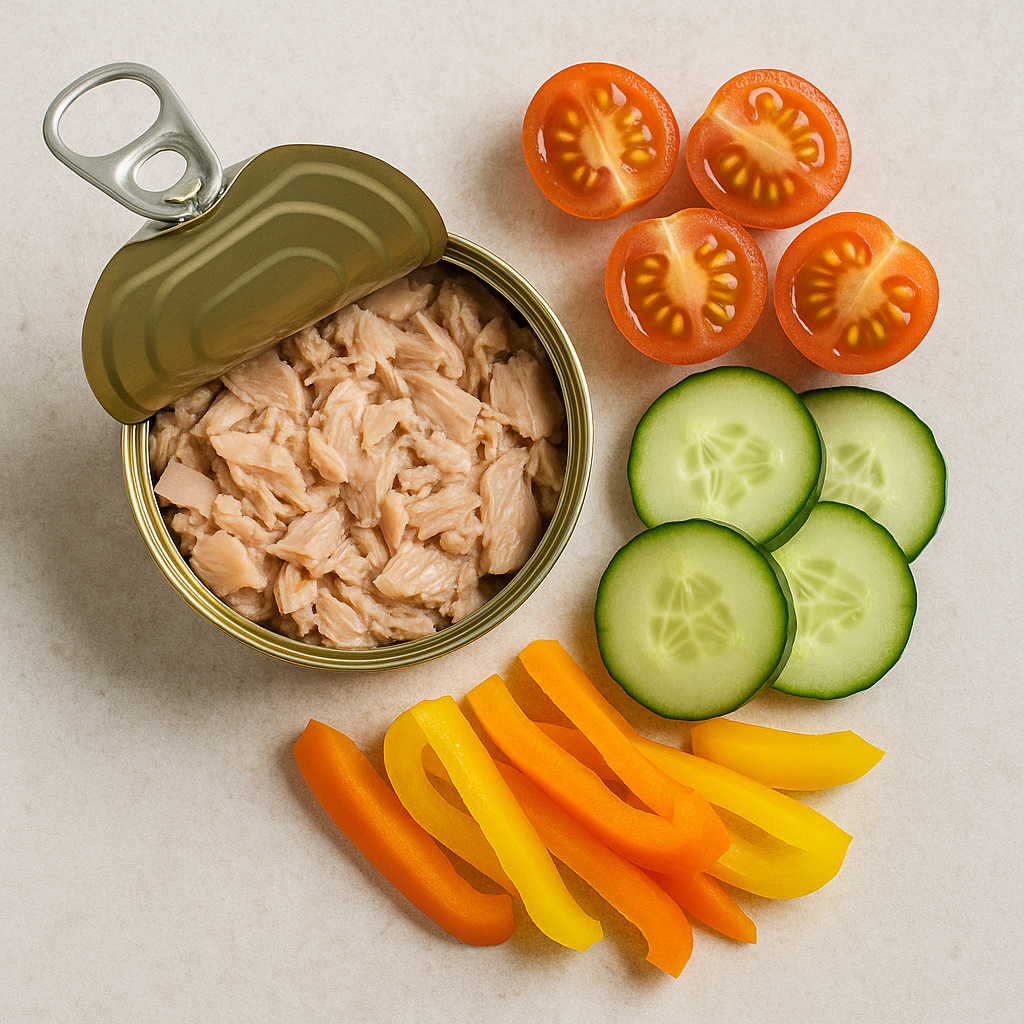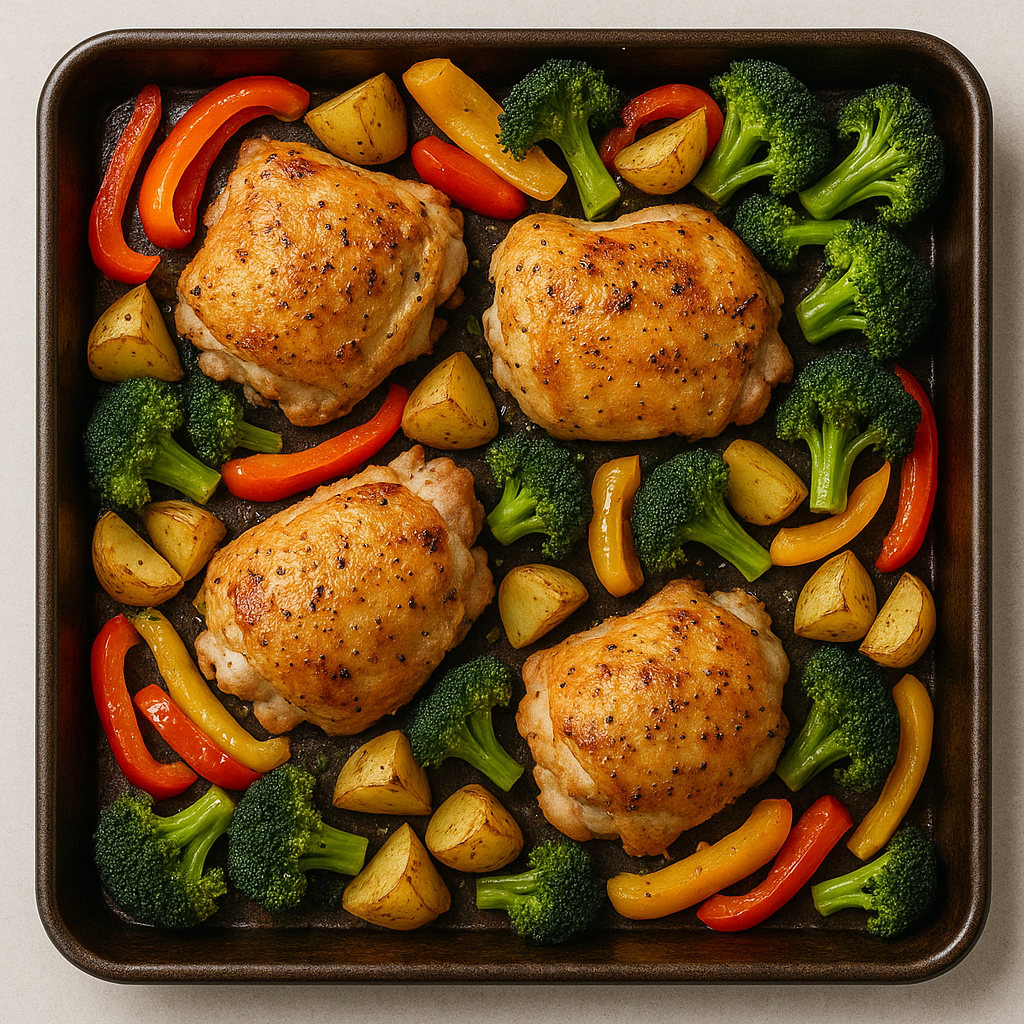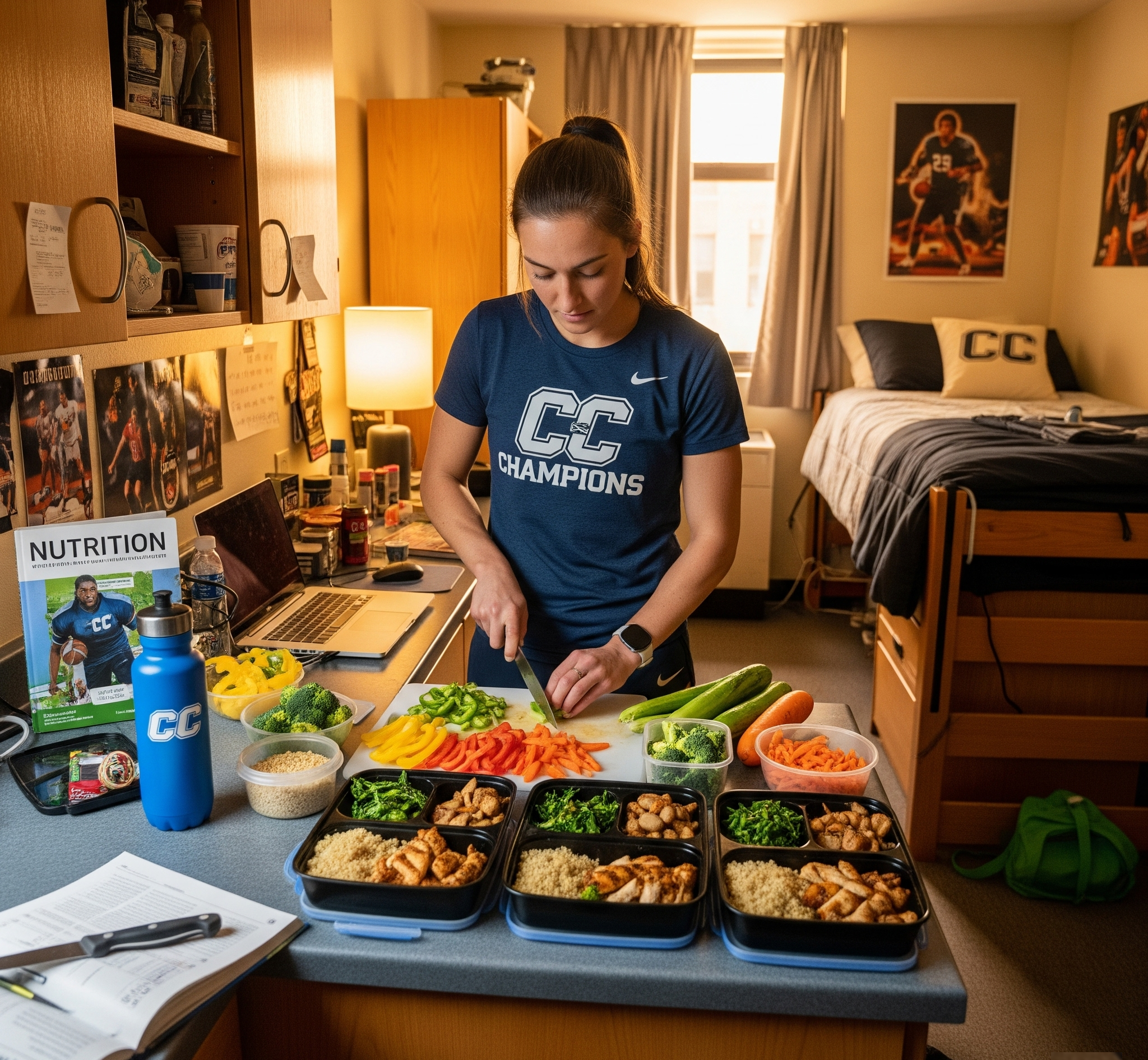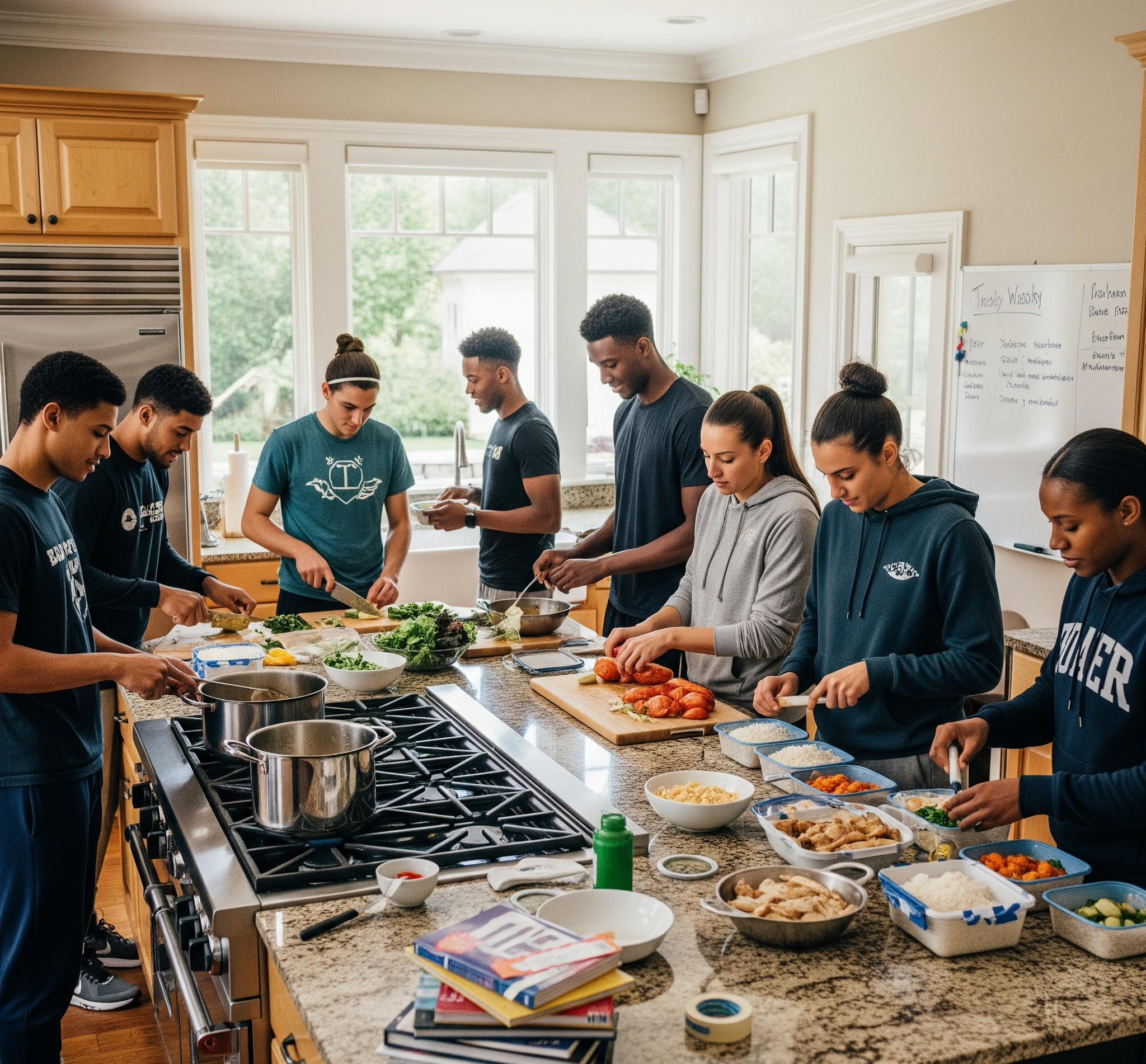Guide to Grocery Shopping
Grocery Shopping and Meal Prep for Sophomores and Athletes During Their First Year Out of the Dorm
*Disclosure: as an Amazon Associate, I may earn from qualifying purchases.
Fueling your fall semester starts before you even swipe your student ID. For many sophomore athletes, this is the first time you’re fully responsible for planning, shopping and preparing meals on your own! Gone are the days of mom’s grocery list and campus meal swipes. Welcome to life in a tiny kitchen, a modest budget and the chance to build habits that will carry you through every practice, lift and exam as well as the rest of your life! Use this guide to make your first solo grocery run a success, keep your budget on track, streamline meal prep and conquer batch cooking even in a dorm-friendly kitchen.
Welcome to Your First Solo Grocery Run
Walking into a supermarket for the first time on your own with an apartment or house can feel overwhelming - THAT’S OKAY!!. Start by mapping your course. Most stores follow the same basic layout: produce, bulk grains, proteins, dairy, then snacks and household items. Sketch a rough list organized by section. Circle the produce aisle 3 or 4 times if you need to! If you shop by department, you’ll avoid doubling back down aisles you’ve already passed and save precious time for studying.
Before you head to the store, take inventory at home. Open your fridge and pantry and write down staples that are already there, as well as those that are low or missing. Eggs, oats, rice and frozen vegetables are reliable workhorses that form the backbone of simple meals. Jot those favorite items of yours at the top of your list. Once you see the shelves full of options, it can be easy to lose focus. A clear list keeps you on task and stops impulse buys, so you stick to what you need and resist the lure of suddenly “essential” flavored chips or energy drinks while staying on budget!
Budget Breakdown Calculator
As a sophomore living on your own, it’s a very healthy practice to find alignment with a grocery budget early on - What foods matter most to you? Is it a high quality protein? Organic grains? Cost-friendly beans and lentils? A weekly grocery budget of $60 - $75 usually balances cost with enough variety to keep meals interesting. To understand where your money goes, set up a simple budget breakdown—no fancy apps required.
Estimate your weekly meals
Decide how many breakfasts, lunches and dinners you’ll prepare. Doesn’t it make (a lot of) sense to cook one huge portion of an egg, green chile and ground beef casserole for 5-6 breakfasts of your week? What about 4 cups of wild black rice (bowls) with 6 chicken breasts, 2 cans of crushed pineapple and large bag of frozen mango chunks for lunches? If you cook every single meal, that might mean twenty-one times you are cooking each week… what the frick? If you use the dining hall twice a week, keep that in mind as well!
Divide your budget
Take your total weekly budget and divide by the number of meals you plan to make. If you have sixty dollars to spend and you cook fourteen meals, you have about four dollars per meal. A meal rich in beans, lentils and chickpeas is one of the lowest cost meals you can make, while also being the most environmentally friendly!!
Building this breakdown once helps you understand prices in real time. Over your first few trips, you’ll internalize what a typical meal costs, making future shopping faster and more intuitive.
Dorm-Friendly Meal Assembly Guide
When you’re juggling practice, classes and study sessions, cooking each night isn’t realistic. Meal assembly transforms a hectic week into a smooth ride. Focus on recipes that require minimal equipment, minimal effort, and maximum payoff.
Mason-jar breakfasts. Layer oats, milk or yogurt, protein powder, cocoa powder or cinnamon and fruit in a sealable jar the night before. In the morning, grab a spoon and go. No stovetop or microwave required.
No-cook protein bowls. Drain canned beans or tuna, toss with olive oil, vinegar and seasoning, then serve over bagged salad mix. A container of sliced vegetables, a handful of olives and a sprinkle of cheese add flavor with almost zero cooking.
Microwave bakes. Mix olive oil, 2-3 eggs beaten and stirred with a fork, chopped vegetables and a pinch of shredded cheese in a microwave-safe/glass bowl. Cook for 90 seconds, stir, then microwave another minute. Now you have an omelet without a stove or pan!!
Batch Cooking in a Small Kitchen
Batch cooking may sound like a full-time job, but with the right strategy it fits into a dorm kitchen. Reserve one hour on a less busy day, such as Sunday afternoons, and tackle these 3 steps:
Pick a simple recipe. Choose one-pot soups, skillet meals or pasta dishes where ingredients go in together, cook together and clean up together.
Cook and portion. After the meal finishes, divide it into four to six individual containers. Label each with the date and contents so you know exactly what you’re eating later.
Store smart. Keep two containers in your fridge for the next two days and freeze the others. A quick reheat in the microwave or on a hot plate gives you a hot, balanced meal in minutes.
Over time, you can rotate through staples like chili, vegetable curry or pasta primavera. With minimal fuss, you’ll always have a wholesome meal waiting even when the library pulls you into an unexpected late-night study session.
Summary
Taking control of your groceries is your first triumph in self-sufficiency. By planning a clear shopping list, mastering your budget, prepping simple meals and batch cooking in a dorm-friendly kitchen, you’ll gain more free time for your sport, your studies and your life. You’ll finish the semester with stronger habits, a healthier routine and confidence that you can tackle anything starting with your next grocery run!








